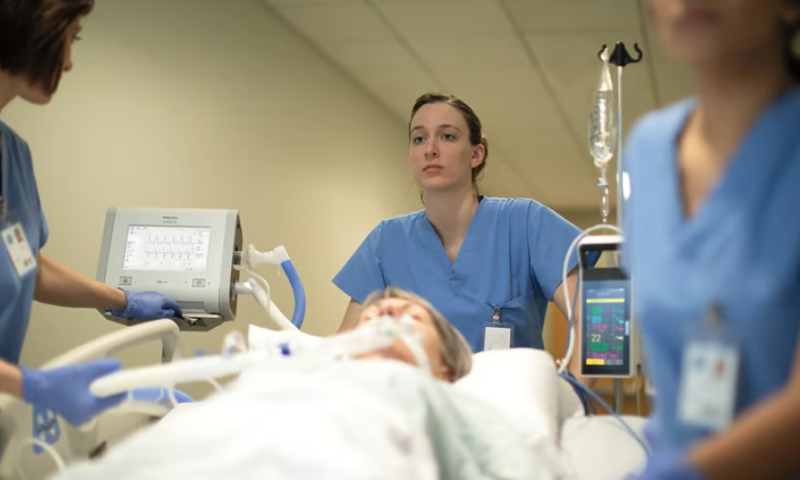Try as Philips might to forge a path out of its two-year-long saga of a slew of respiratory device recalls—complete with a new CEO and a new head of the beleaguered connected care division—the company is facing yet another, linked to more than 62,000 of its ventilators.
This time concerns several models of Philips’ Trilogy ventilators: the Trilogy EV300, Trilogy Evo O2 and Trilogy Evo Universal—none of which have been included in the largest of the Dutch devicemaker’s recent recalls, where 5.5 million CPAP and BiPAP machines and other devices are being repaired and replaced due to issues with their polyester-based, sound-muffling foam.
Instead, in a letter (PDF) sent to healthcare providers last month, Philips described how these machines may not accurately deliver the amounts of oxygen needed during high-concentration therapies.
According to a trio of entries in an FDA database this week, the recall spans more than 62,800 devices distributed around the world. The agency has delivered a Class I rating, its most serious, denoting an increased risk of injury or death.
The recalled ventilators can all be used to deliver high-concentration oxygen therapy in hospital settings; the recall doesn’t include the standalone Trilogy Evo device, which is typically used in a patient’s own home.
In high-concentration oxygen therapy, the fraction of inspired oxygen, or FiO2, provided by a ventilator is programmed above the standard maximum of 5%. However, in the letter to healthcare providers, Philips said it discovered that the recalled devices may actually deliver oxygen therapy with FiO2 levels well below the programmed levels.
Additionally, according to the company, in those of the devices that are equipped with an internal FiO2 sensor, the sensor may also display an inaccurate reading, showing a higher oxygen concentration than is actually being delivered.
In a statement sent to Fierce Medtech on Wednesday, Philips said it identified the issue “as part of our intensified quality efforts, and through our internal testing of devices.”
Philips noted in the letter to healthcare providers that the issue is most likely to occur when the ventilators are being used to provide particularly high concentrations of oxygen—with FiO2 setpoints of more than 70%, for example. If that occurs and a patient isn’t being closely monitored, that under-delivery of oxygen could result in oxygen desaturation, also known as hypoxemia.
Neither Philips nor the FDA disclosed information about the number of complaints that have been linked to the recall.
The cause of the issue is still under investigation by Philips, per the FDA, but the company said it’s already working on a software update to fix it. Once ready, it’ll be available to all users of the affected ventilators free of charge.
“Philips Respironics is committed to addressing this issue quickly and efficiently, to meet our commitments to our customers and their patients who rely on our respiratory care solutions,” the company said in Wednesday’s statement.
In the meantime, the devices can still be used, though Philips has advised healthcare providers to keep a close eye on the blood oxygen saturation (SpO2) and arterial blood gas levels of patients using the ventilators to catch any potential instances of hypoxemia. They should also have a backup device ready to quickly swap in as soon as a ventilator is found to be delivering inaccurate concentrations of oxygen.
Additionally, the company recommended that if any of the recalled ventilators are being used to provide oxygen therapy with FiO2 set to 70% or above, they should be connected to an external FiO2 monitor—and if one isn’t available, then a different ventilator should be used.

